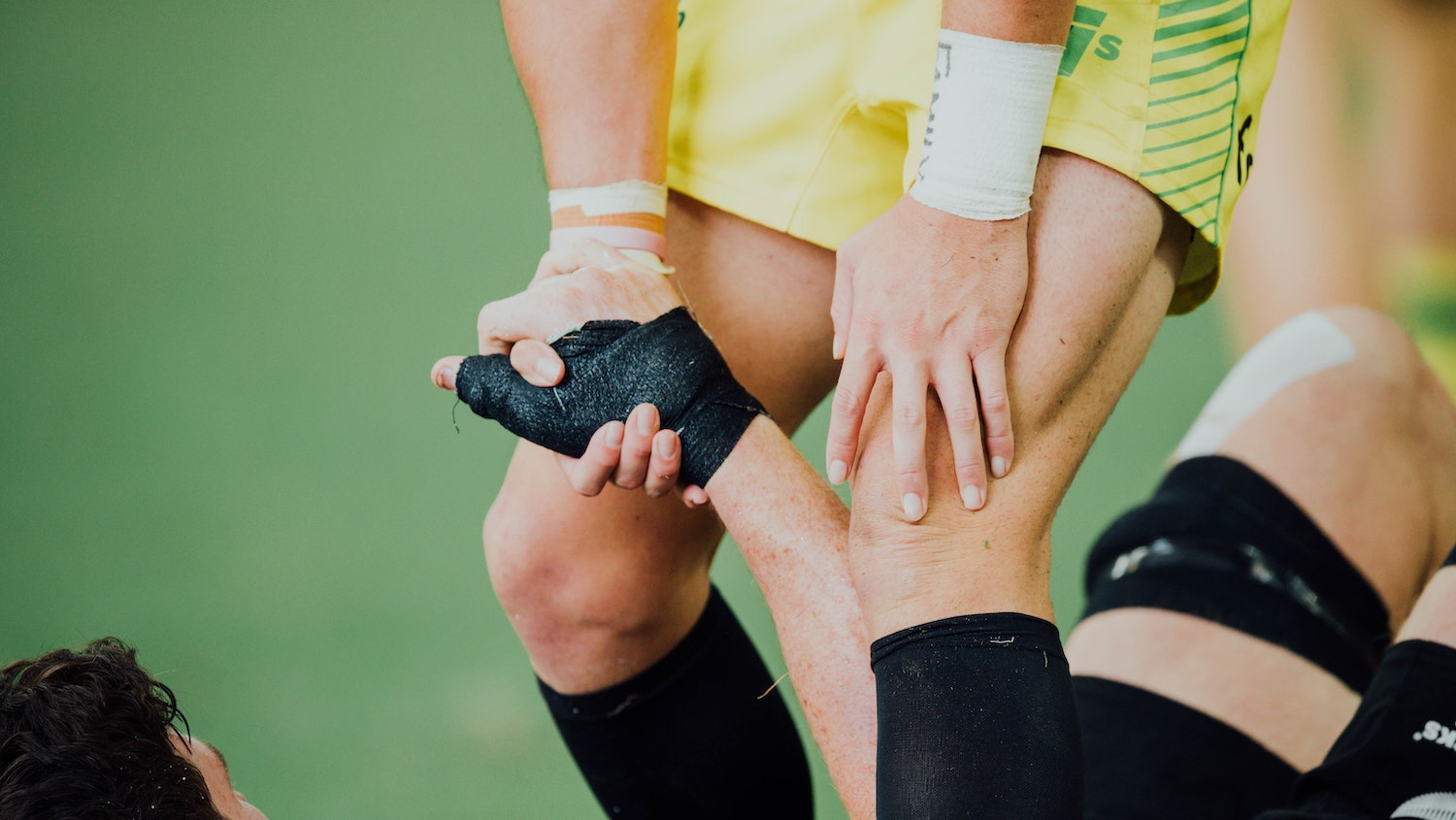What is the meniscus and what is a meniscus tear?
The knee is a really complex joint which means it can be susceptible to a variety of different injuries. A meniscus tear is a really common knee injury. It can sometimes be an isolated injury or it can occur when there is damage to the knee ligaments.
The menisci are tough, rounded (C-shape) structures that assist with load transfer from above to below the knee. They almost act as “shock absorbers” for the joint. There is a meniscus on the middle side as well as the outside of the knee.
A meniscus tear can be considered a partial or total tear, however, the middle side meniscus is most commonly injured. It is quite rare that both are injured at the same time.
Common causes of a meniscus tear
Meniscus tears can be caused by simple movements that lead to the knee bending or twisting slightly.

This often occurs during sports when your foot is still on the ground but your leg and body are twisting in a different direction. Movements such as twisting into a footy tackle, stepping to block the netball or moving quickly on an angle to return a tennis ball.
There can also be degenerative tears of the meniscus where there is aging within the joint. This is completely normal and our bodies are naturally good at managing this degeneration with the right approach. However, over time wearing of the meniscus can occur, especially when there are repeated motions such as squatting or jumping happening for years.
Common meniscus tear symptoms
If you tear your meniscus, you may feel a pop or strange sensation. You may experience some pain, but most people can still walk and many athletes can continue playing sport with a torn meniscus. It is usually the next couple of days post-injury that your knee can feel stiff and inflamed.
Some common meniscus tear symptoms include:
- Pain
- Stiffness
- Swelling and inflammation
- The feeling of instability around the knee
- Reduced range of motion
In more severe cases where there is a larger tear, you may feel a sensation of your knee locking. This can sometimes occur when the meniscus is caught on the bony structures of the area.
What to do if you have these symptoms
Booking in for a knee assessment with an experienced osteopath is a great start if you’re experiencing any of the above meniscus tear symptoms. An osteopath will examine the area and determine the severity of the knee injury.
In some cases, an x-ray or MRI may be useful to understand how the injury is impacting the joint. However, this is more likely in a suspected larger tear and can often be avoided by following a great management plan and getting onto the issue early.
Immediate management of a meniscus tear
We know injuries generally occur when you’re out for your early morning run or playing an evening team sport. Sundays or public holidays tend to be a favourite for injuries too!
It’s not always convenient to just pop into your osteopath to be seen immediately after your injury occurs. So before you’re able to make your appointment, we recommend you take the following steps for the immediate management of your meniscus tear.
- Protect your knee area from further injury, resting until it can be properly assessed.
- Use a compression garment as well as elevate the area.
- When there is pain, ice may be used. However, it may not assist in long-term recovery so following the above points would be more beneficial.
- If it is comfortable to do so, keep the knee moving. Listen to your body. If it doesn’t feel good, wait until it can be properly assessed, however it can be helpful in starting the recovery process.
Recovering from a meniscus tear
In most cases, meniscus injuries can be addressed with some initial hands-on treatment with your osteopath. This will be followed by an exercise management program to regain mobility and strength in the area to prevent the injury from recurring.
In more severe meniscus tears, there can sometimes be surgical management to ensure the tear is not being caught on other structures or causing any other issues within the knee joint.
Your osteopath will always provide their best recommendation of a plan that avoids invasive surgery and helps you recover fully from your injury.
As there are many variations of a meniscus injury, the time it takes for your knee to return to full function and for you to be back playing sport can differ. In minor injuries, return to full recovery can be expected in 2-3 weeks, while in more serious cases it can take up to 6-8 weeks.
If you think you’ve sustained a meniscus tear or you’ve had recurring knee injuries, it might be time to book an appointment with your trusted osteopath. You can book online with our Geelong West and Ocean Grove osteopath team here.
